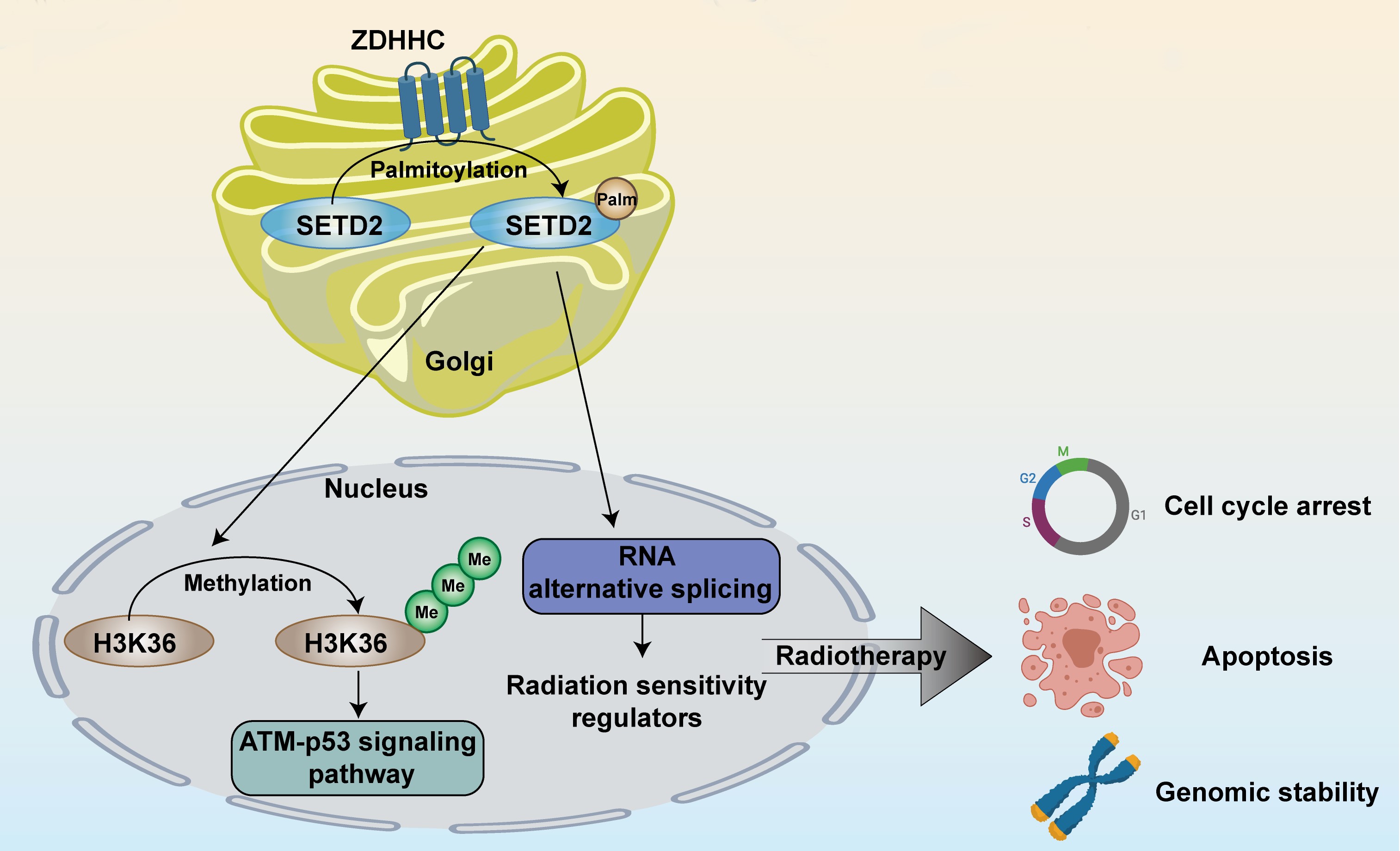
According to a research published in Journal of Radiation Oncology Biology Physics recently, a team led by Prof. FANG Zhiyou and Prof. CHEN Xueran from Hefei Institutes of Physical Science (HFIPS), Chinese Academy of Sciences (CAS) found, for the first time, that palmitoylation regulated the activity of SETD2, a kind of protein, affecting the level of H3K36me3 methylation and RNA alternative splicing events, and promoting the recruitment of DNA damage response factors after radiation.
Radiotherapy is one of the main treatment methods for malignant glioma. However, the mechanism of radiation resistance is not completely clear, and the research on efficient new targets of radiation sensitization needs to be strengthened.
An earlier research made by the same team proved the involvement of proteins with zinc-finger and aspartate–histidine–histidine–cysteine domains (ZDHHC proteins) and protein palmitoylation dysfunctions in tumorigenesis, particularly in malignant glioma development and progression.
In this research, scientists discovered novel mechanistic evidence relating signaling pathways with DNA-damage responses in glioblastoma multiform (GBM). They also investigated the role of palmitoyltransferase ZDHHC16 palmitoylation in recruiting SETD2 and its target, H3K36 in generating a DDR signaling module in GBM.
As a result, a tumour-suppressive SETD2-H3K36me3 axis, which was involved in gene regulation in GBMs, was identified. They found that once DNA double strand break (DSB) occurs, H3K36me3 defined a local chromatin state, and recruited DNA repair factors to DNA damage and repair DSB. DNA damage repair signaling impairment was happened in GBM after ionizing radiation, because that ZDHHC16, and palmitoylation of its target SETD2 was downregulated.
"This study," explained CHEN Xueran, who conducted the research, "identified the de-palmitoylation inhibitor, PalmB, as a potentially novel adjuvant therapeutic for patients with human gliomas undergoing radiotherapy."
This research was supported by the National Natural Science Foundation of China, the Youth Innovation Promotion Association of the Chinese Academy of Sciences, the Innovative Program of Development Foundation of Hefei Centre for Physical Science and Technology and National Key R&D Program of China.

Schematic illustration of the mechanism of SETD2 palmitoyaltion regulating DDR (Image by CHEN Xueran)